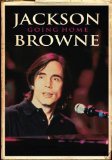Mention the name Jackson Browne and one thinks less of the performances and more of the music itself. While he never achieved quite the fame of many of his peers, his style and songwriting has had a lasting impact on some of the biggest names in the music industry. He was part of the whole Troubadour scene in the early 1970’s where he hung out with the likes of James Taylor, The Eagles, and other notable artists who were about to find their golden tickets to larger stages and the crowds, money, and fame that went along with them. The likes of Crosby, Stills, & Nash have been inspired both by his ability to write and his passion for the causes he believes in. In the 20 years from 1979 to 1999 he organized and performed at over 1000 benefit concerts. It’s not so much an accomplishment to be willing to give up your own time for the causes dear to your heart. Brown has a reputation in the business of being someone they can’t say no to. His biggest cause has been his stand against nuclear power plants. Agree with him or not, Browne used his fame in a responsible way that today’s artists can learn from. He did his preaching at the events and not so much at his paying gigs.
“For more than two decades, Jackson Browne has been one of the most compelling artists in popular music. In August of 1994, The Disney Channel presented Jackson Browne: Going Home, a chronicle of Jackson’s remarkable career. Jackson Browne: Going Home contains interviews, performances, and rare footage spanning twenty-five years featuring Don Henley, Bonnie Raitt, David Crosby, Graham Nash, The Eagles, David Lindley, Jennifer Warnes and many more.”
This 90-minute release is the home video version of that special. While there is a ton of music here, this is not your traditional concert film at all. The performances are often interrupted with interview segments, mostly featuring Jackson Browne himself. The performances are not all from the same show. There might be five different performances represented in one song. The editors did a remarkable job of cutting them seamlessly. It helps that Browne has kept a core of musicians longer than pretty much anyone else in the business. You only know they’ve changed by the slight alterations of acoustics and the age of Browne’s voice. There are often vintage photographs and video clips from his life both on and off the stage. Many of the listed tracks are incomplete. There is a great amount of interview material here with the folks listed above. Browne takes you on a tour of his house and goes through boxes of lyrics and sheet music pieces. It’s an incredibly intimate look into his life and songs. No fan will want to miss having it in their collection.
Video
Jackson Browne: Going Home is presented in its original broadcast full frame aspect ratio. This is 16-year-old television stuff, and I’m going to tell you right now, most of it looks pretty rough. But, the material is what it is. Look at it as a documentary and you won’t be disappointed. Some of it is better than others. Some of it is very old and looks pretty rough. Deal with it.
Audio
You can listen to this in PCM 2.0, DTS 5.1, or Dolby Digital 5.1. I found the DTS track to be the most dynamic. Again you’ll have to understand that much of this is vintage. It does sound better than it looks. Someone did a great job mixing the musical stuff, and it is actually better than the image would imply it should sound. The dialog sections are front and center. It’s old, but it’s all good.
Special Features
NADA
Final Thoughts:
I don’t own a lot of Jackson Browne music, but I know many of the songs by heart. He’s always been a songwriter’s songwriter. Since the 70’s every kid who’s picked up a guitar as strummed out a Browne song at one time or another. There’s an old joke that I recently stole; sorry Andrew. How many guitar players does it take to cover a Jackson Browne song? Answer: Apparently all of them. That’s because “every song is special”.





